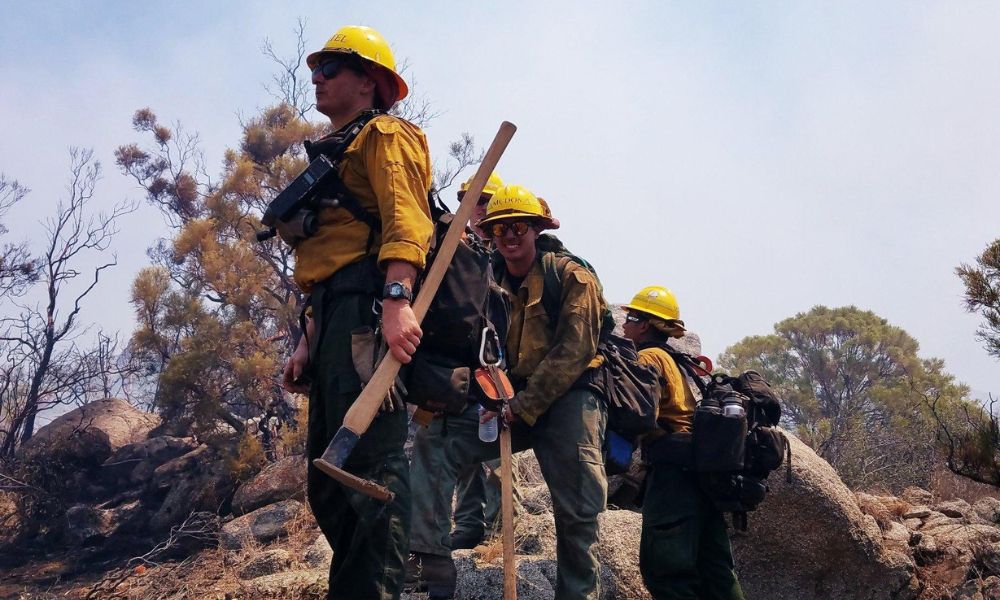
Wildland firefighters require fire-resistant clothing that protects them from the flames and heat and moves easily with them as they maneuver through tough terrain and situations. They must be ready for anything at a moment’s notice, and there is no time to waste wondering if the fire-resistant clothing is in good shape and safe to wear. Follow along as we discuss proper storage, washing, and repairing so that you understand how to care for fire-resistant clothing.
What Is Fire-Resistant Clothing?
Fire-resistant clothing is not to be confused with fire retardant. Manufacturers produce fire-resistant clothing using fibers that are resistant to flames. Fire retardant clothing uses a chemical spray that goes directly onto the material and lessens the flammability of the clothing. Many companies design infant pajamas using fire retardant.
The danger with fire retardant is that the chemical eventually wears off. Washing with detergents, using fabric softeners, and drying the material with heat takes its toll. Fire-resistant clothing, however, when cared for properly, continues to resist flames because the entire piece consists of flame-resistant material.
Firefighters wear clothing that has a functional design to work with them safely and efficiently. Much of the clothing is fire-resistant and falls under the category of PPE (personal protective equipment). Examples of these clothing items include:
- Flame-resistant brush shirts
- Flame-resistant brush pants
- Flame-resistant overpants and overcoats
- Belt and suspenders
- Flame-resistant boots and other footwear
Nomex is a fiber that is inherently heat resistant, meaning it will not melt. It’s the fiber of choice for wildland firefighters’ clothing because it creates an exceptional barrier between flames and the person wearing the Nomex clothing.
The NFPA 1977 Standard
The National Fire Protection Association (NFPA) creates standards to protect everyone from the dangers of fire, including firefighters. As a wildland firefighter, all your PPE clothing should be NFPA 1977 certified. This certification is the only way to know that the fire-resistant clothing comes to you after rigorous safety testing. The tests use certain criteria to guarantee proper design and optimal performance. You’ll find the NFPA 1977 certification on the tags and descriptions for shirts, pants, jackets, gloves, boots, helmets, and other equipment.
How To Store Fire-Resistant Clothing
You can’t simply fold up fire-resistant clothing and put it anywhere. Some thought must go into where you will store it when not in use. Choose a space that is clean, dry, and at room temperature for storage. And, of course, make sure the area is easily accessible and readily available.
As fire-resistant clothing works with a firefighter during battle, it endures a lot and can damage easily. Rips and tears and missing buttons or closures are signs that the piece is no longer safe to protect you. Inspect these things before stepping into your fire-resistant clothing when you take it out of storage:
- Spots and stains
- Torn fabric
- Missing buttons
- Malfunctioning zippers
- Uncomfortable pieces
Some repairs are helpful, such as a replaced button, but other issues may be signs that it’s time to replace the clothing article instead. Never take a chance and wear damaged PPE. When in doubt, repair or replace.
How To Wash and Dry Flame-Resistant Clothing
You must treat flame-resistant clothes differently than your regular laundry. It’s OK to use your washing machine at home if you do not mix your daily clothes in with your firefighting pieces. Also, if the PPE shirts, jackets, and pants have heavy soiling, such as smoke, dirt, and other grime, it’s best to wash them in an industrial washing machine. You can use your usual laundry detergent, but you’ll want to skip the fabric softeners and bleach. You want to protect the Nomex fibers as much as you can. Hang the garments to dry or tumble dry on the lowest heat setting.
When To Repair Fire-Resistant Clothing
Fire-resistant clothing is an investment and not a cheap one. The elevated cost is due to the high-quality materials, which you wouldn’t want to compromise on. Still, it’s important to take special care of the attire so that you can make use of the investment for as long as possible. If you can repair instead of replacing a piece, you can save money, but keep in mind that your safety should trump your desire for savings.
As mentioned, inspecting your fire-resistant clothing is an essential part of ensuring everything is in working order. If you see a flaw, the best way to decide if fixing it is reasonable or if a replacement is necessary is to think about how the article of clothing will function. Will the repairs alter the fit? Will it be just like new once repaired, or will it never be the same? Let’s look at a list of damages that are safe to repair and won’t change how the PPE functions.
- Replacing a button
- Fixing a zipper
- Addressing a removable stain
- Patching a small tear
Meanwhile, these issues indicate the need for a replacement.
- A large tear or hole that will change the size or shape of the clothing if repaired
- Unidentified stains that could alter the effectiveness of the fire-resistant material
- Thin, worn areas that will not provide enough protection
- Non-functioning closures that won’t open or close properly
- Open seams that no longer function correctly after a repair
Your local tailor is likely able to repair PPE clothing using a PPE repair kit. If you don’t have one, check our selection of available repair kits. Keep in mind your protective clothing is part of your team and can save your life. If any damage alters it, you may need something new.
Understanding how to care for fire-resistant clothing is of extreme importance for your safety as you fight wildland fires. At The Supply Cache, we are proud to offer wildland firefighter PPE clothing, such as our firefighter brush pants made with Nomex and sold exclusively at The Supply Cache. Our protective clothing meets NFPA 1977 standards for wildland firefighting. We are honored to support these brave men and women. For questions regarding fire-resistant clothing and other wildland firefighting equipment, please contact The Supply Cache.

